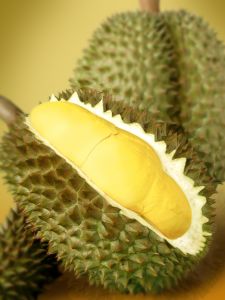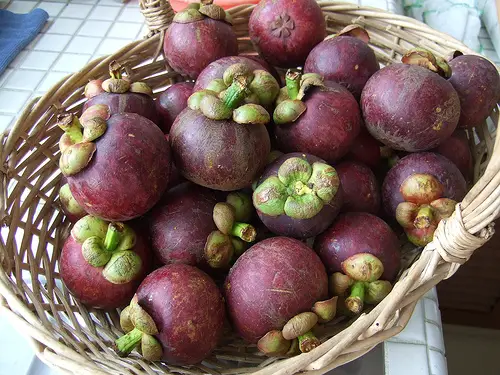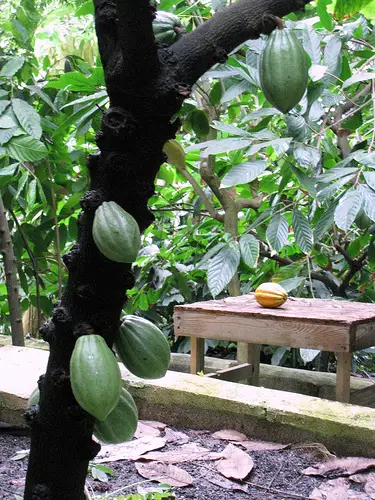Durian
Revered in South-East Asia as the ‘king of fruits’, the durian is a type of fruit from several tree species belonging to the Durio genus and the Malvaceae family. It is distinctive for its size, smell, and thorn-covered husk. It can grow as large as 30 cm long and 15cm in diameter, and weighs on average between 1 to 3 kgs. It is usually oblong or round, is green or brown on the outside, and has pale yellow to red flesh, depending on the species.
Even when the husk is intact, the flesh emits a strong and powerful, distinctive odour. Some would say that the durian’s smell is fragrant, but some would say it is extremely overpowering. The smell is so bad that it has been banished from hotels, public transport, and more.
The fruit is native to Malaysia, Indonesia, and Brunei. It has been known in the western world for 600 years. Alfred Russel Wallace who was a 19th century British naturalist, described the durian’s flesh as tasted like rich custard flavoured with almonds. In actual fact, the flesh can be eaten during various stages of ripeness so it can be either sweet or savoury when eaten.
There are 30 different types of Durio species, 9 of which has edible fruit. Only the Durio zibethinus species is available on the international market, while the rest are sold in their local regions. There are actually hundreds of cultivars, and some durian afficiondos have preferences for specific types of cultivars which fetch a higher price in the market.
In terms of ecological diversity, Borneo island is known for its diverse durian species. All of the edible species are sold in local markets, and there are also different genetic types which are available. Although Thailand is a major exporter of durian, it is not native to this country. There is debate whether durians from Malaysia or Thailand are better, however there are reports that Thai durians (which you can mostly find on sale at oriental supermarkets) are pumped with chemicals to make it look bigger and so on.
Durians are eaten fresh, however they can come in other forms. In Malaysia, it comes in a variety of sweets like ice kacang, candy, biscuits, cakes, ice creams, and even cappuccino. In Sabah, the red durian is fried with chilli and onions, and served as a side dish. In Indonesia, the red-fleshed durian is used in a soup called sayur, which is made from freshwater fish. It is also found in Indonesia in a fermented form.
The durian is known to increase fertility. In Indonesia, the Javanese people believe that the durian has aphrodisiac qualities. They even has a saying, “the durians fall and the sarongs come up” which refers to this belief.
In Malaysia, it can be used as an antipyretic. In traditional Chinese medicine as well as other southeast Asian folk beliefs, the durian is considered as a ‘heaty’ fruit and thus causes excessive sweating. In order to counteract this, water is poured into the empty shell of the durian fruit and drunk from. Alternatively, it is eaten with mangosteen.




